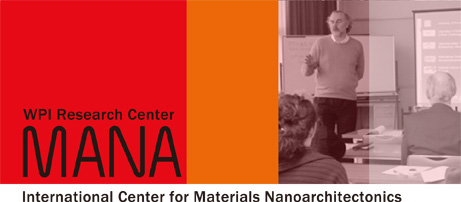Alexei A. Belik

- Affiliation:
- International Center for Materials Nanoarchitectonics
- Specialty:
- Solid-State, Inorganic, and Crystal Chemistry
- Academic degree:
- Ph.D. in Inorganic Chemistry, Moscow State University (1999)
- Recent publications
- See NIMS Researchers DB
Education History
| 2006 | - | Present | Senior researcher (NIMS) |
| 2004 | - | 2006 | ICYS research fellow (NIMS) |
| 2002 | - | 2004 | Postdoctoral fellow under Profs. Mikio Takano and Masaki Azuma supervision (Institute for Chemical Research, Kyoto University) |
| 2000 | - | 2002 | Postdoctoral fellow under Prof. Fujio Izumi supervision (NIRIM/NIMS) |
| 1999 | Ph.D. in Inorganic Chemistry, Moscow State University | ||
| 1997 | - | 2000 | Researcher, Department of Chemistry, Moscow State University |
| 1997 | - | 1999 | Ph.D. candidate, Department of Chemistry and Physics Department, Moscow State University |
| 1991 | - | 1997 | Student, Department of Materials Science, Moscow State University, Russia |
Research Interests
Multiferroic and ferroelectric materials.
Mutriferroics are an interesting class of materials from viewpoints of application and basic physics. In multiferroics, two or all three of (anti)ferroelectricity, (anti)ferromagnetism, and ferroelasticity are observed in the same phase. We recently investigated ferroelectric, magnetic, and multiferroic properties of BiMO3 and PbMO3 prepared at high pressure of 6 GPa. Even in these simple systems we could find new compounds such as PbVO3, BiAlO3, BiGaO3, BiInO3, and 'BiVO3'. Some of them show promising ferroelectric properties. We could also clarify structural and magnetic properties of BiScO3, BiMnO3, and BiCrO3. In a very adaptive structural type of β-Ca3(PO4)2 that allows different substitution in all sublattices, ferroelectric and antiferroelectric properties were found depending on the cation compositions, e.g., Sr9Lu(VO4)7 and Ca9Fe(PO4)7 are ferroelectric and Sr9In(PO4)7 and Sr9NiLi(PO4)7 are antiferroelectric.
Low-dimensional magnets.
One of the best-known so far one-dimensional Heisenberg S = 1/2 antiferromagnet was discovered, Sr2Cu(PO4)2. The importance of super-superexchange interactions in determination of magnetic lattice was demonstrated in a large number of compounds, e.g., MCuP2O7 (M = Ca, Sr, Ba, and Pb) and MCu2(PO4)2 (M = Sr and Pb). New spin-gap systems were found (MCu2(PO4)2 and Cu2PO4OH).
Selected Papers
- A.A. Belik, S. Iikubo, T. Yokosawa, K. Kodama, N. Igawa, S. Shamoto, M. Azuma, M. Takano, K. Kimoto, Y. Matsui, E. Takayama-Muromachi, 'Origin of the Monoclinic-to-Monoclinic Phase Transition and Evidence for the Centrosymmetric Crystal Structure of BiMnO3', Journal of the American Chemical Society, 129, (2007) 971 977.
- A.A. Belik, S. Iikubo, K. Kodama, N. Igawa, S. Shamoto, M. Maie, T. Nagai, Y. Matsui, S.Y. Stefanovich, B.I. Lazoryak, E. Takayama-Muromachi, 'BiScO3: Centrosymmetric BiMnO3-type Oxide', Journal of the American Chemical Society, 128, (2006) 706 707.
- A.A. Belik, T. Yokosawa, K. Kimoto, Y. Matsui, E. Takayama-Muromachi, 'High-Pressure Synthesis and Properties of Solid Solutions Between BiMnO3 and BiScO3', Chemistry of Materials, 19, (2007) 1679 1689.
- A.A. Belik, T. Wuernisha, T. Kamiyama, K. Mori, M. Maie, T. Nagai, Y. Matsui, E. Takayama-Muromachi, 'High Pressure Synthesis, Crystal Structures, and Properties of Perovskite-Like BiAlO3 and Pyroxene-Like BiGaO3' Chemistry of Materials, 18, (2006) 133 139.
- A.A. Belik, M. Azuma, T. Saito, Y. Shimakawa, M. Takano, 'Crystallographic features and tetragonal phase stability of PbVO3, a New Member of PbTiO3 Family', Chemistry of Materials, 17, (2005) 269 273.


